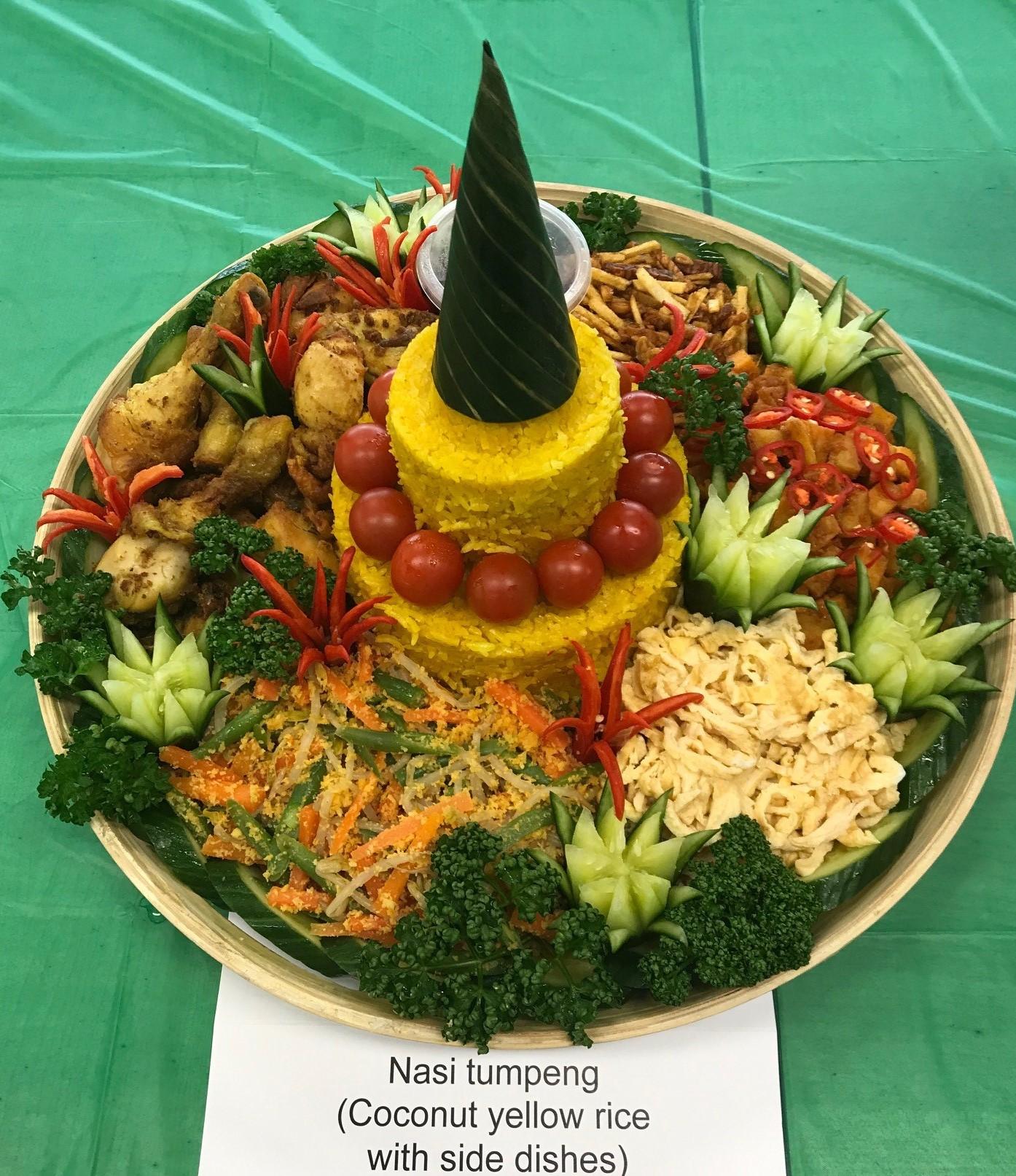World Food Day at GFAR
Today the staff and PhD students at the Centre for Global Food and Resources (GFAR) are hosting a lunch to celebrate World Food Day.

GFAR team photo
What is World Food Day?
World Food Day is 16 October each year. It commemorates the day in 1945 that the Food and Agriculture Organization of the United Nations (FAO) was founded. This year events are organized in over 150 countries, making it one of the most celebrated days of the UN calendar. This year the theme is ‘healthy diets for a zero hunger world’. Zero hunger goes beyond hunger, it means enough nutritious food for everyone, everywhere.
World Food Day menu at GFAR
In celebration of the rich cultural diversity and the love of food and food research within GFAR, staff and students are sharing food that reminds them of ‘home’. This blog showcases some of the dishes on the menu for our World Food Day lunch.
Käse-Spätzle is a popular vegetarian dish (sometimes also served as a side) in southern Germany. It is essentially German Mac and Cheese, although Spätzle looks more like gnocchi than pasta. The dish originally started as a poor man’s dish: spätzle consist mainly of flour and some egg. Over time it has become the signature dish of Swabia (in Germany), with Spätzle layered with cheese and onion and baked in the oven to create a cheesy crust on top. It is a wholesome feel-good meal, great for rainy and cold weather and much adored by children, and of course our PhD student, Constantin Seidl.
Apple Strudel is a common ‘everyday’ dessert in the Czech Republic. It is best described as fleshy folds of pastry blanketing cinnamon sprinkled apple slices. When not baked by our qualified dietitian, Dr Lenka Malek, a dusting of icing sugar is applied before serving. Dessert was a fourth main meal when Lenka was growing up (and out ;-)) and apple strudel was a common feature on the menu.
Pão de queijo (cheese bread) is a small baked cheese roll and a really popular snack in Brazil. With the discovery of mines near Ouro Preto city, there was a movement from the Northeast to the new economic hub. The mining cycle brought economic growth, and the pão de queijo was created! It is said that people would soak and peel the cassava root and make bread rolls. At the time, with no cheese, but later, more ingredients entered the recipe. Livia Padilha decided to bake this because her family loves it and used to eat it almost every day!
Spanish tortilla or Tortilla de papas is an omelette made with eggs and potatoes cooked in olive oil. It is often served at room temperature as an appetizer. Yeah! Tapa! How fortunate that we have a Spanish visitor, Luis Mateo Peinado, at GFAR for World Food Day! Variants of the tortilla include onion, chorizo, pepper, or whatever your imagination brings. Differently crafted in Spain with advocates of its thickness, juiciness, saltiness (the list could go on indefinitely); it raises passions at bars, homes, barbecues, birthdays, football matches (you name it). It seems that its origins are traced to humble farmers working in the field.
Caldereta or Kaldereta is one of the many Spanish influences in Filipino cuisine. The dish got its name from the Spanish word “caldera”, meaning cauldron, because it is usually cooked in a cauldron. Caldereta is a stew traditionally made using goat meat, tomato sauce, liver spread, and vegetables such as potatoes, carrots, and bell pepper. Just like other Filipino dishes, it has evolved through the years and has now different versions – mainly in the choice of meat (pork, beef, or chicken). Caldereta is commonly served as a main dish (best eaten with rice) during holidays and special occasions. World Food Day is a special occasion so, Rio Maligalig is making beef caldereta for us!
Kang kiew waan (Thai green chicken curry) is a very popular dish served in most Thai restaurants worldwide. It features chunks of tender chicken simmered in coconut milk with green curry paste made with ingredients such as green chilies, ginger, and lemongrass. It's one of the most loved curry dishes for Thai people due to its distinctive taste and pleasant green colour. Phassara Khamthara, our PhD student from Thailand and honorary Thai food expert, says Thai people call it sweet green curry, and the word "sweet" is used to describe the mild, pleasant, pastel green shade of the green curry.
Chinese ‘Lushui’ (pronounced "loo shoi") is a very traditional cooking method that was recorded in early cookbooks from 1,500 years ago. Today, it is quite common all over China. Ingredients include water, salt, soy sauce, multiple spices and cooking alcohol and all types of animal parts people would like to eat (on this occasion, our PhD student, Wenzhu ‘David’ Tang is using chicken).
Home style mixed cold dish is one of many traditional foods in China. It is usually prepared as an appetizer, or to eat after consuming a lot of meat (to help remove that greasy feeling). It can be made with many ingredients. Our visiting student, XuPu Li will use cucumber, tomato, dried bean curd sticks, vermicelli, bean sprouts and peanuts all seasoned with soy sauce, vinegar, pepper and garlic. It smells fragrant and tastes crisp and refreshing. It is considered a must-have dish when people go to a restaurant.
Tumpeng is a traditional yellow rice dish that is served in a conical shape along with seven(!) side dishes. Indonesian people (mainly in Java and Bali Island) usually have Tumpeng as a form of gratitude to the Almighty for the abundance of crops and blessing. For this reason, it is common to have Tumpeng to celebrate important events, such as a birthdays, Independence Day, starting a new business, etc. We are adding World Food Day to that list! Traditionally, the top of the cone is given to the most honourable person among those who are present (we might have to draw it out of a hat?), and then everyone will be invited to enjoy the dish. Our five Indonesian PhD students are getting together to prepare this elaborate dish for us.

Nasi Tumpeng
Kangaroo sausage rolls? What better way to combine Australia’s national emblem mixed with a national staple. While, sausage rolls have a long history, with roots in Greece, France and the United Kingdom, they have been highly popularised in Australia. It is a common feature of many children’s parties, work events and service station menus. This take on the humble sausage roll, from GFAR’s Jack Hetherington will use kangaroo meat, an excellent source of protein and other nutrients such as zinc and iron, with very low levels of fat. While it has only really been legalised in South Australia since the 1980’s, kangaroo was a key part of the diet for many generations of Indigenous Australians.
ANZAC Biscuits are widely associated with, and consequently named after the Australian and New Zealand Army Corps (ANZAC) who went to World War I. The biscuits were sent to soldiers by families and women's groups. These biscuits were favoured because they were thought to keep and transport well. Today the biscuits are an ‘everyday’ biscuit but may also be baked for ANZAC day on 25 April. The recipe Nikki Dumbrell will use for World Food Day is from 1914 and courtesy of the Country Women’s Association, a classic Australian institution!
PhD student, James Fuller is bringing a dose of local to World Food Day by bringing a South Australian classic, Farmers Union Iced Coffee. First launched in 1977 when "Farmers Union" was a co-operative of South Australian dairy farmers, the brand has achieved iconic status in South Australia and is now also available in all other Australian states and territories. In 2008 Farmers Union Iced Coffee outsold Coca-Cola in South Australia at a rate of almost 3:1, with South Australians consuming 36 million litres, making it the only place in the world where a milk drink outsells a cola product. How is that for a fun fact?! Thanks, Wikipedia.
Our resident Ethiopian, Fentahun Abebe is preparing ‘Injera’ with ‘Doro Wat’. Injera commonly prepared with teff flour is eaten widely across Ethiopia. It can be also made with corn, sorghum, rice or barley flour. Doro wat (chicken curry) is another favourite dish in Ethiopia made with chicken and other ingredients, such as onion, chilli, tomato, garlic, ginger, etc.
Pies have long been made for every holiday and festival in Russia, including posh royal celebrations and small peasant occasions. Large pies with several ingredients are really popular, they are baked on Christmas and Easter and served in taverns and small tea-houses, where each owner has a special recipe to make their pies unique, e.g. opened and closed pies, feature simple (potatoes or cabbage) or complicated fillings, such as sturgeon with buckwheat. On this occasion, Julia Avdeeva is bringing us a beef pie.
